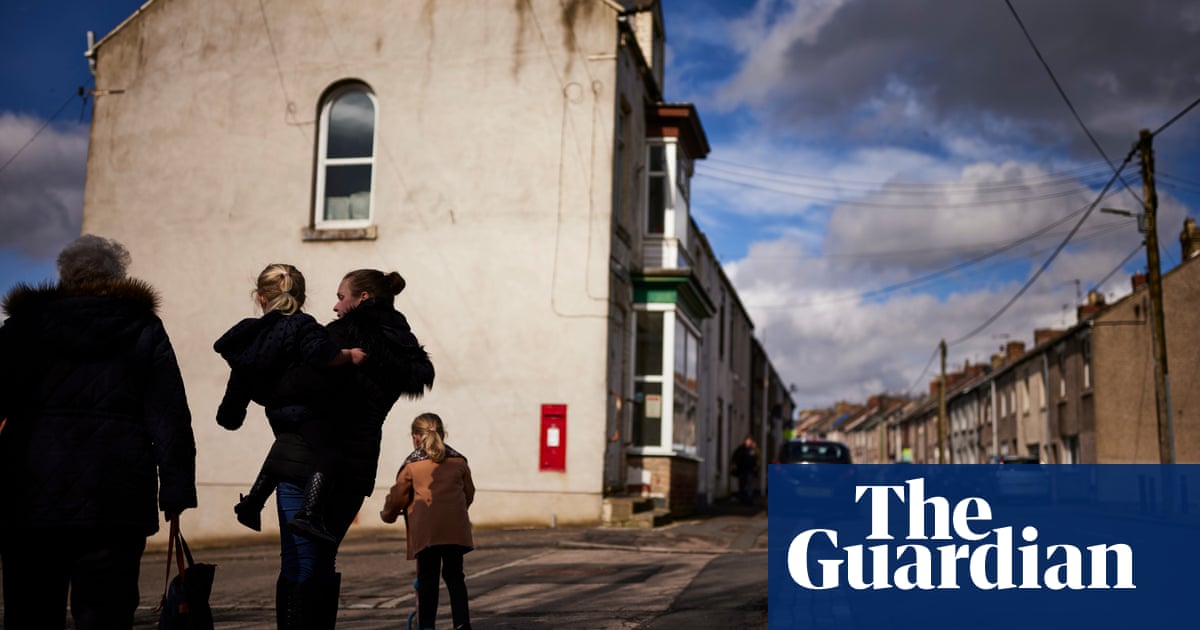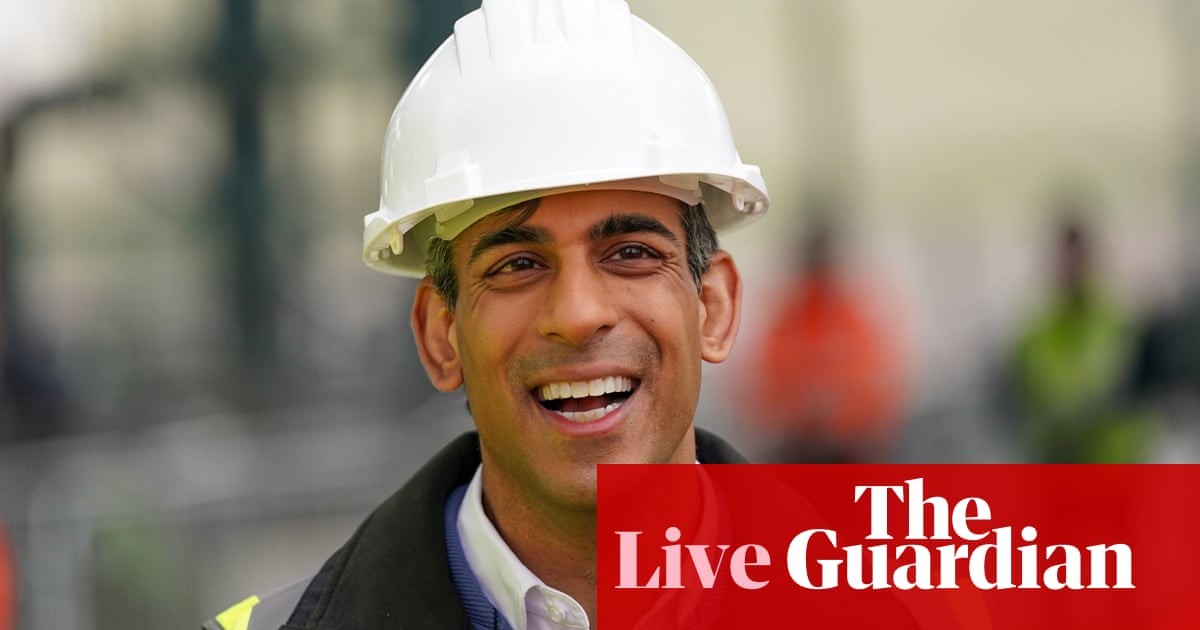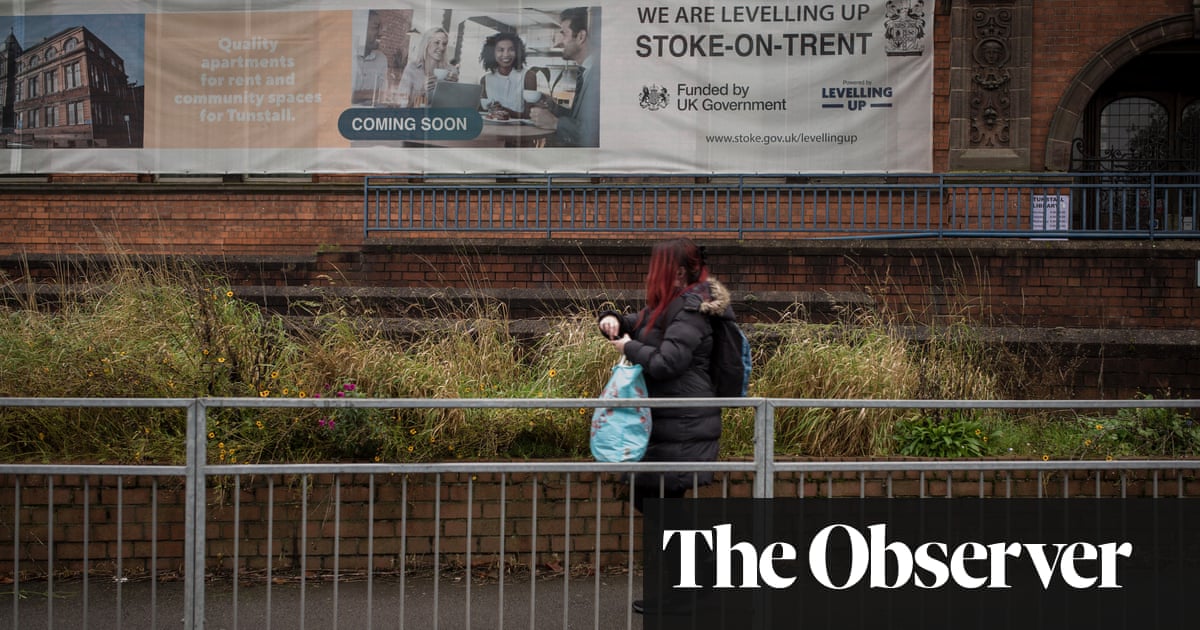
The Conservatives have been accused of failing to live up to their ambitious agenda for Britain’s regions, as Guardian analysis shows no progress has been made on half of their levelling up targets.
The analysis of the 12 targets set by Michael Gove in his 2022 levelling up white paper shows there has been no progress in six of them, including three where evidence suggests things have got worse. These include education, skills and wellbeing, which have stagnated, and local pride, housing and health, which have deteriorated in the last two years.
The findings are further evidence of how far ministers have fallen short of the lofty goals set out by Boris Johnson earlier this parliament, when he promised to raise living standards and close Britain’s yawning regional equality gap.
Labour is seeking to put that failure at the heart of its local election campaign, with Keir Starmer accusing the government of having “strangled levelling up at birth”.
The Guardian analysis is the first in a series looking at how the Conservatives’ flagship post-Brexit growth programme was derailed by a mix of political turmoil, pork barrel politics and Whitehall interference.
Jack Shaw, a fellow at the Bennett Institute for Public Policy, said: “Despite the government’s rhetoric, this data shows that it’s failing to turn the tide on regional inequalities. For too many families, that means living unhealthier lives with inadequate access to transport infrastructure and employment.”
Michael Heseltine, the former cabinet minister and long-time champion of regional development, warned that some of the levelling up funds appeared to have been used as political tools to win votes in certain seats in the north.
“The British economy needs a shot in the arm and the only way to get that economy moving is to create a partnership with the people in the local area and know what strengths and weaknesses they have got,” he said. “You have got to involve the people you are trying to help and not just send them Christmas presents every so often.”
John Stevenson, the Tory MP who chairs the party’s Northern Research Group, said the varying outcomes were evidence of his party’s fluctuating focus on the north in particular.
“The truth [is] the government’s commitment to the north has ebbed and flowed,” he said. “At times it’s been full on, but at other times it’s been lukewarm.”
Angela Rayner, the shadow levelling up secretary, told the Guardian: “Levelling up hasn’t really delivered because the projects have been gimmicks. They’re not really addressing some of the fundamental issues that towns and cities across the country face.”
The government denied that its agenda had fallen flat. A spokesperson for the levelling up department said: “Levelling up is an ambitious long-term programme of reform and by sticking to the plan we are making significant progress against our missions.”
Johnson first started talking about his levelling up agenda before the 2019 election, with the Tory manifesto promising to close the gap between London and the rest of the country.
However Covid delayed much of the implementation of the project, which only crystallised in 2022 when Gove set out his vision for how to stimulate growth across the country in his levelling up white paper.
In that paper, the levelling up secretary said: “While talent is distributed evenly across the UK, opportunity is not. For many, if you want to get on you need to get out. Levelling up is a mission – part economic, part social, part moral – to change that for good.”
Since then however, implementation of the programme has struggled to live up to Gove’s powerful rhetoric.
Ministers repeatedly delayed the second round of bidding for the flagship £4.8bn levelling up fund, before changing the rules on how the money was to be allocated even after bids had been submitted. A recent report from the public accounts committee found only 10% of the £10bn allocated for levelling up had been spent, while 80% of the projects that received money early in the process were due to miss their deadline of completion by the end of March.
The Guardian’s analysis of the progress made in the 12 missions set out by Gove in 2022 gives further evidence of the failures of the project so far.
They include health, where data from the Office for National Statistics shows that the average healthy life that a child can expect when they are born – the metric identified in the levelling up white paper – has been getting steadily shorter for the past decade. Furthermore, the gap between the north-east, where life expectancies are at their lowest, and the south-east, is growing.
Local pride also seems to be falling. The government’s community life survey found 76% of people felt satisfied with the area where they live in May 2023 – down from 79% in 2020-21.
In housing, the number of first-time buyers has fallen over the last few years, while the number of homes falling short of being classified as “decent” has risen.
In some of the government’s target areas, things have improved, albeit in patches. They include crime, which has improved in parts of the UK but not in others, and living standards, where wages are finally beginning to outstrip inflation.
Wage growth is now higher in Yorkshire and the north-west than it is in London and the south-east, while the gap between employment in London and employment in the north-east reduced by 3% between May 2022 and May 2023.
The one area in which the government has made good progress is in devolving powers, thanks to a series of devolution deals signed since 2022, including a new mayor in the east Midlands and new powers for existing mayors.
A spokesperson for the department said: “In 2010, there was no devolution in England beyond the M25 and now almost two-thirds of the country is covered by devolution deals – including 90% of the north – with more to come.”












